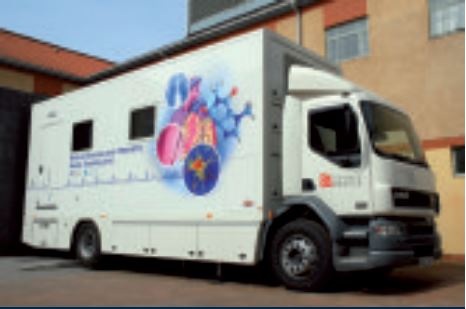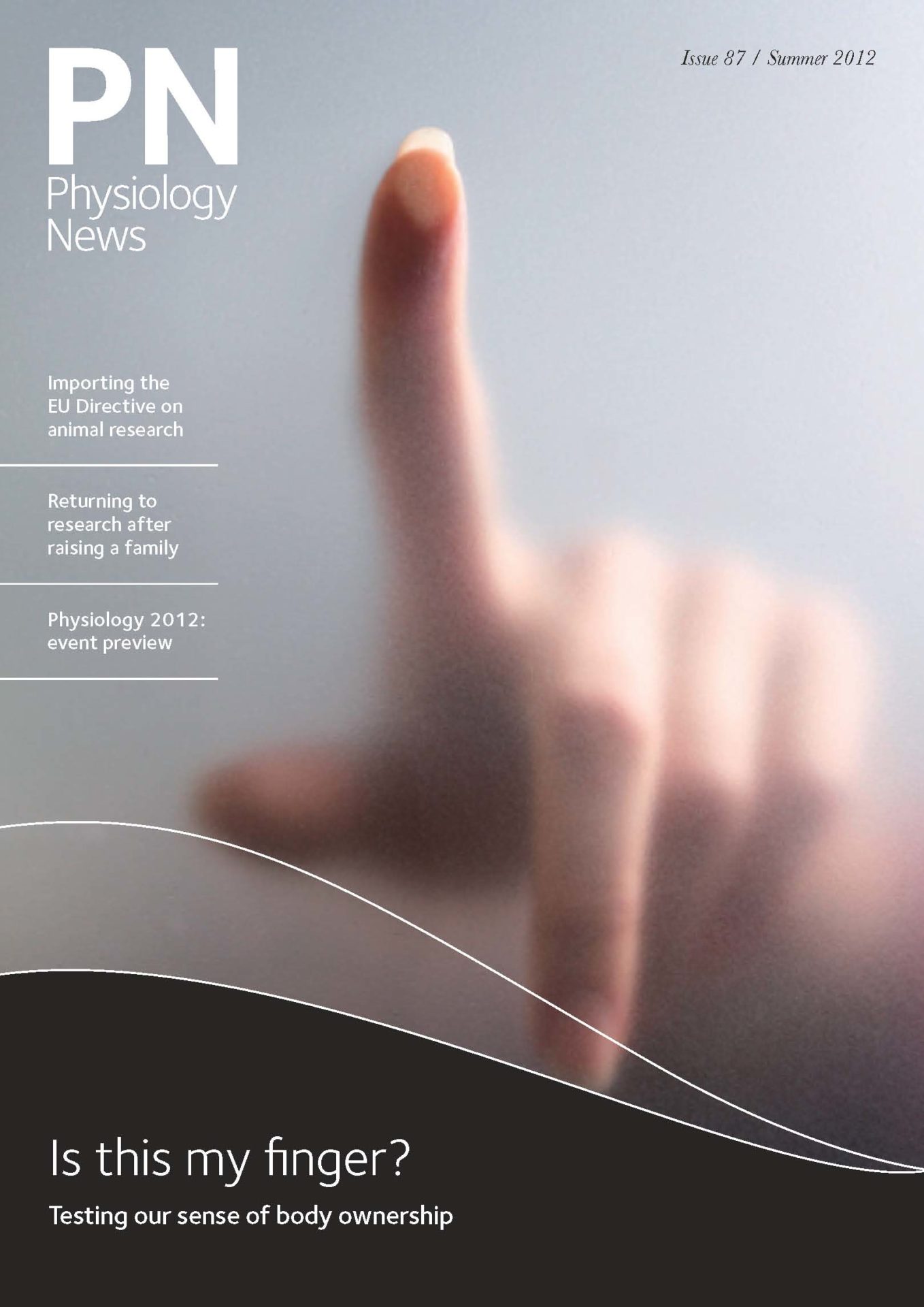
Physiology News Magazine
A day in the life of… the Mobile Teaching Unit
Membership
A day in the life of… the Mobile Teaching Unit
Membership
Lauren Hughes, Teaching Fellow and outreach teacher at the University of Bristol, recounts a typical day with the Society-sponsored ‘lab-in-a-lorry’.

https://doi.org/10.36866/pn.87.40
The day starts early when you are travelling the length and breadth of the country with the Mobile Teaching Unit (MTU). The MTU is an 18-ton HGV lorry that transforms into a science classroom and contains all the equipment necessary to teach and demonstrate physiology to a wide audience.
Meeting new people and travelling to new places makes each visit with the MTU unique and makes the job great fun. For example, back in February the MTU was headed for The Latymer School in North London for the day. By 5 am the MTU was travelling down the M4 from its base at the University of Bristol – and for the teaching staff the travelling began much earlier, arriving in London by train the day before to ensure that everyone was wide awake to be able to teach all day.
After arriving at the school at 7.30 am there was plenty of time to be treated to a school breakfast and a cup of tea in the canteen before teaching began. A warm welcome by the school upon arrival is always a great way to start the day. The MTU was parked in a corner of the school’s playground, the side pod expanded to accommodate up to 20 pupils for each interactive teaching session.
Teaching in the MTU is entirely self-sufficient; the only resource we asked the school for on the day was a bowl full of ice and water, for purposes which would become clear later on. Before the arrival of the first group of pupils, all the equipment was set up – a laptop and TV screen which run the teaching presentation together with a PowerLab for ECG recordings, a Vitalograph for lung function measurements and other physiological equipment including stethoscopes and pulse oximeters. Anatomical models, formalin-fixed animal specimens and posters were also on display to help link structure to function when explaining how the body works.
Across the day we taught all the Year 12 pupils in the school who were studying Biology AS level; pupils were split into groups and each attended a 1-hour-20-minute teaching session called ‘Beating and Breathing’ which covered the physiology of the cardiovascular and respiratory systems.
The aim of the MTU is to supplement the teaching provided in school, to allow pupils to explore aspects of the subject that are not covered in the syllabus and to gain hands-on experience of using physiological equipment.
The first session began at 9.30 am and started with revision of the pupils’ knowledge of the anatomy of the respiratory tract, including the use of histological images. The pupils also watched a video on how a spirometer works and considered which factors may affect lung volume. With this in mind, the pupils then designed their own experiment to investigate some of these factors by measuring each other’s height and using the Vitalograph to measure forced vital capacity. The pupils plotted their data on a wall graph and discussed the correlations that were apparent, not only between height and vital capacity, but also with respect to gender. Following this, the pupils explored the cardiovascular system using models and specimens to look at the structure of the heart together with pulse oximeters, stethoscopes and sphygmomanometers to record cardiac function. To finish, the group watched a demonstration of an ECG being recording on a willing volunteer on the large TV screen and investigated factors that affect heart rate. The teaching ended with a question-and-answer session before the pupils returned to the classroom for normal lessons.
Before the second group arrived the equipment was reset, the MTU put back in order and within five minutes we were ready to receive the next group of pupils.
After the next session we broke for lunch. Navigating our way across a school playground amidst flying footballs was the most dangerous part of the day, but a successful arrival at the canteen ensured we were rewarded with a two-course school lunch (and that has certainly improved since the old days of school dinners). Lunchtime was also a good chance to meet the teachers and find out how they thought the day was going.
After lunch we taught another two sessions of ‘Beating and Breathing’ to the rest of the pupils. It was amazing that, by the end of the day, word still hadn’t spread from the earlier groups that at the end of the session an unwitting volunteer would find themselves hooked up to the ECG machine with their face dunked in a bowl of ice-cold water to demonstrate the diving reflex – always a great way to end a session!
At the end of the school day, 3.45 pm, it was time to pack up and wave goodbye. Seventy-eight pupils from the school had visited the MTU during the day and all pupils had been very keen to fully engage in the sessions.
Arriving back in Bristol at 8 pm, the weary staff headed home and the MTU was parked up back at the university. Following the visit, feedback from the teachers confirmed that the day had been one of the highlights of the biology department’s calendar. As this was the fifth visit to the school since 2008, the MTU and its team must be doing something right and we look forward to many more visits to this school and others round the country.

For more information please visit: www.bristol.ac.uk/cetl/aims/mobileteachingunit
